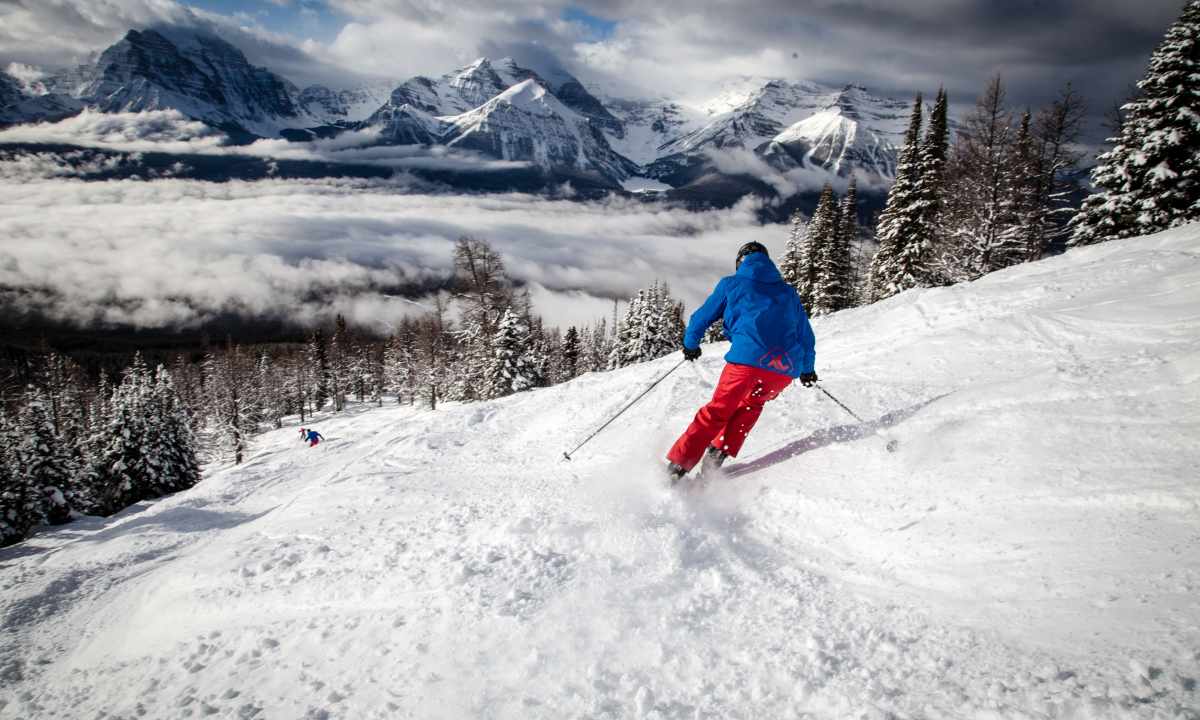One of the most mass and available to all sports is the skiing. Thanks to occupations ski sports, it is possible to increase considerably indicators of force, agility and endurance. Occupations on skis favorably affect human health and maintain it in the tone. There are several types of skiing.
Cross-country skiing
Cross-country skiing carries to cyclic sports. They represent races on skis on distances, various on extent, on the tracks which are specially prepared for this purpose. Cross-country skiing has the following versions:
- Staggered start at which athletes start through the certain interval making, as a rule, 30 seconds and result of races is calculated as the difference between time of the finish and time of start.
- Mass start at which athletes start together. Time of the finish of athletes is result of races. - Pursuits. In this case competitions take place in several stages, after each of which, according to the received result, starting situation at the new stage is defined. - Relays. This cross-country skiing represents team competitions. Each of them consists of 3-4 stages. In team 3-4 athletes who pass each other the baton after the passable stage. - Individual sprint by which rules, competitions are initiated from the qualification stage. The one who passed qualification participates in final stages of sprint. - Team sprint which is carried out as relay of teams of two participants who are serially changing each other after the certain quantity of circles on the track.
Alpine skiing
Alpine skiing represents descent from the mountain along the route designated by the special goal. Special alpine skis which are heavier, shorter and broader than racing are for this purpose used. In this sport always determine accurate parameters of length of the track, to height difference and quantity of the established goal. Allocate several types of alpine skiing: - Slalom: passing of the track 450-500 m long with height difference of 60-150 m; the athlete is obliged to pass through all established goal. - Super-G: unlike ordinary slalom the track is longer here, it is more differences of height and quantity of the goal, and the relief is more various (hillocks, biases, recessions); all this allows athletes to gather high speed. - Giant slalom: the goal is established still more often than in super-G that demands from athletes of bigger skill when passing the track. - Parallel slalom: two racers at the same time on identical parallel tracks compete. - Downhill racing: the fastest and dangerous kind of alpine skiing where on separate sections of track the speed up to 140 km/h is gathered. - Combination: association of downhill racing and slalom, the winner is determined by the sum of smaller time in these two disciplines.
Ski jumping
Ski jumping represents jump flight mix on special skis wings. Having dispersed from the mountain and having come off the earth, the athlete tries to regulate flight by the planes of skis, at the same time as if lays down on the invisible support and leaves it only when landing.
Nordic combined
Nordic combined which is also called the northern combination unites ski jumping and cross-country skiing. Athletes make two attempts of the jump from the 90-meter springboard for which points are summarized, and then participate in the race free style on 15 km.
Snowboard
The snowboard represents discipline in which exercises on one special ski are performed (snowboard – the snow board). There are several sports: - Parallel giant slalom: two athletes at the same time on identical parallel tracks participate. - Parallel slalom: differences from parallel giant slalom in the smaller length of the track. - Snowboard cross: there are certain requirements to the track which has to contain enough figures of the relief that allows athletes to increase speed when passing the distance. At first the qualification stage, and then final is carried out. - Big air: after dispersal from big height, the athlete in flight performs the set of tricks. - Halfpipe: the track represents the snow trench (half-pipe in translation means "the half of the pipe"), rolling down which from the edge to the edge, athletes perform jumps and other acrobatic tricks. - Slopestyle: athletes pass the track with numerous obstacles (handrail, hopping zones, etc.).
Freestyle
The freestyle is translated as "freestyle" and represents performance of various tricks and jumps on skis. It is divided into several disciplines: - Aerials: on the special springboard the athletes have to execute several jumps and acrobatic exercises. - Mogul: athletes go down on the slope on which mogula or hillocks are in chessboard order located; each athlete carries out two jumps from the springboards located on the track; speed, technology of descent and jumps are considered. - Ski cross: the race on the ski slope with numerous springboards, waves and bends; at first qualification, and then final stages is carried out. - Halfpipe: on the special track in the form of the trench the athletes show various tricks; their complexity, technology and purity of performance are considered. Except purely ski sports there are disciplines which include skiing elements: - biathlon, - ski tourism, - sports orientation on skis, - ski-mountain climbing.
